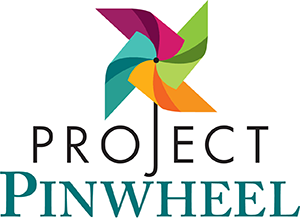Internet sex crimes and trafficking (commercial sexual exploitation) of children are a small and yet significant and growing part of the child sexual abuse problem. Crimes in this category include a range of actions from sexting (electronic exchange of explicit photos or text) to individuals selling sexual acts with a child. All are damaging and involve targeting, tricking and traumatizing an innocent child. While technology is always changing, below are some general guidelines for keeping children safe from sexual predators online.
Some Facts:
13% of all 10 to 17 year olds receive unwanted sexual requests while on the Internet.
In more than one-quarter (27%) of incidents, solicitors ask youth for sexual photographs of themselves.
Studies have shown that over a period of a year, one in 25 youth receive an unwanted sexual solicitation where the solicitor tries to make off-line contact.
The majority of sexual assault victims who have only had contact with a predator on-line, meet up with that person willingly. 93% of those encounters included sexual contact.
The majority of the sexual assault victims who met their predator on-line are between the ages of 12 and 15.
15% of cell phone-owning teens (12–17) say they have received sexually suggestive nude/seminude images of someone they know via text.
22% of teen girls and 18% of teen boys have sent/posted nude or seminude pictures or videos of themselves.
76% of internet-initiated sex crime victims report their first encounter with the predator was in an online chat room.
Best Practice around Technology
- Make sure that your child’s interactions are visible and public.
- Keep the computer in a common area, and have rules about computer access and usage.
- Ask about on-line rules and supervision everywhere your child will have access.
- Make sure your child knows never to meet someone they met on-line face-to-face without first talking with you about the situation.
- Have the computer safety-guarded. Use age-appropriate filtering, blocking and monitoring software on all Internet-enabled devices used by your child.
- Educate yourself about your child’s on-line activities. Get to know the web sites your child has visited on the Internet, and who your child is communicating with on-line through email, instant messaging, webcam use, social networking sites, cell phones and photo exchanges. Pay attention to images downloaded and uploaded.
- Explain to your child that he or she should never give out personally identifiable information on-line. For example, your child should understand that he or she should not post detailed information about his or her whereabouts, physical address, phone number or email address.
- Try to connect the cyber world to the real word. For example “you wouldn’t talk to a stranger at the park, it’s not any different online.”
- Make sure children know to never share passwords, even with their BFF.
- If children are old enough to use social media, make sure they know to only “friend” people they know and to use security settings to limit who sees their posts.
- Explain the consequences of posting inappropriate material online. For example, a child’s reputation can be impacted by a status entry or an image that is shared.
- Remind children that using cameras and phones to take pictures/videos of private parts may not involve touching but still aren’t okay and they need to tell an adult.
- Keep current with technology, keep communicating about dangers and use and keep checking their activity to ensure they are making safe choices.
Helpful Links:
Family Safety Online Institute –A group using policy, education and best practices to make internet safer for all.
ConnectSafely – Parent guides to apps, phones, social media and more.
NetSmartz– An interactive, educational program of the National Center for Missing & Exploited Children that provides resources to teach online safety to children ages 5-17, parents and guardians, educators and law enforcement.

